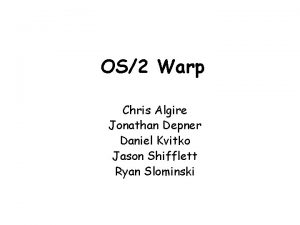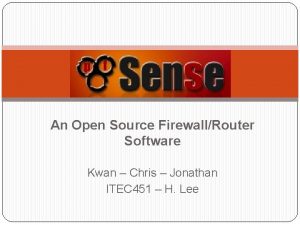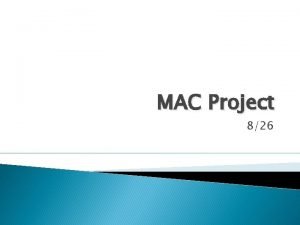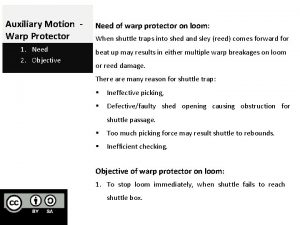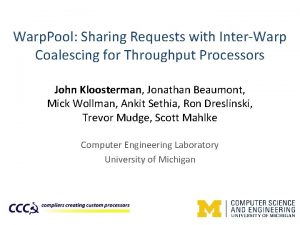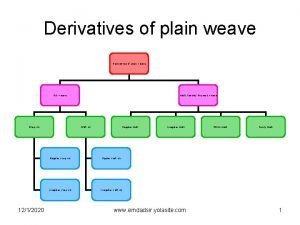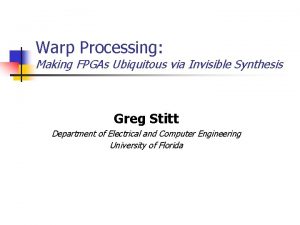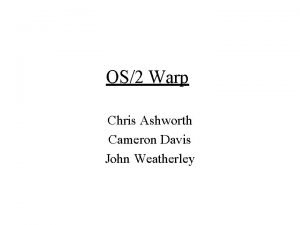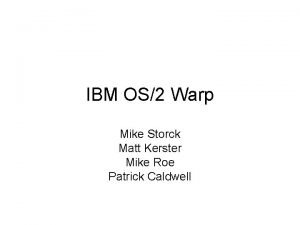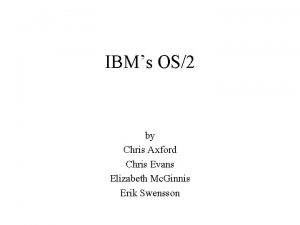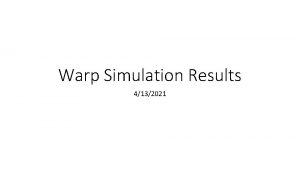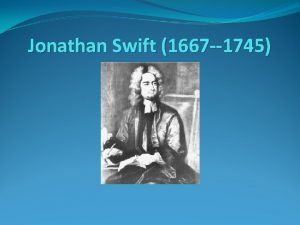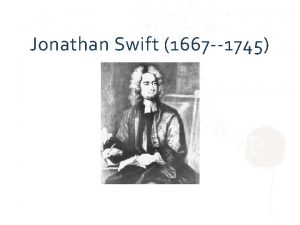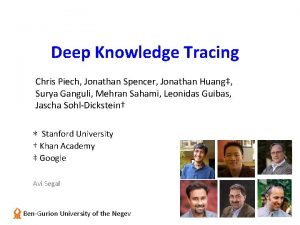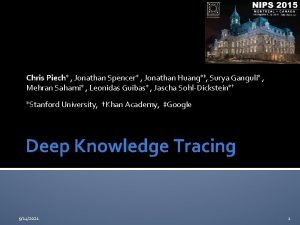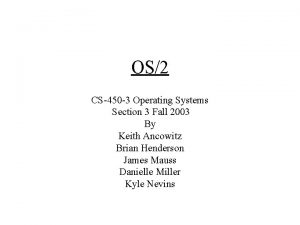OS2 Warp Chris Algire Jonathan Depner Daniel Kvitko












- Slides: 12

OS/2 Warp Chris Algire Jonathan Depner Daniel Kvitko Jason Shifflett Ryan Slominski

Introduction § OS/2 was a revolutionary operating system when it was introduced § The 1 st to do the following: § § § Break the 640 KB memory barrier Support 32 -bit Support multitasking on the desktop Automatically detect deadlocks IBM and Microsoft Project was a collaboration between IBM and MS Partnership led to OS/2’s demise Microsoft’s OS proved to be easier to use Since the partnership between the two companies lasted even after Microsoft left the project, IBM was forced to include support for Microsoft’s OS with OS/2 § As a result, most Wintel machines today can operate using OS/2 § § § Current use § OS/2 evolved to OS/2 Warp 4 and today is in use in corporate environments due to its stability which rivals that of Unix

Processor Info § Intel Architecture § Four processors modes, 0 -3, where zero has highest privilege § OS/2 Warp utilizes modes 0, 2, 3 § Mode 0 § Kernel mode § Unrestricted direct access to hardware § Mode 2 § Restrictive kernel mode § Limited direct access to output devices § Mode 3 § User mode § No direct access to hardware; higher privileged modes must handle hardware access on behalf § OS/2 Warp supports uniprocessing and symmetric multiprocessing

File Structures § Native File System: High Performance File System (HPFS) § File Structures: Fnode, Run, B+ Tree Fnode-run representation B+ tree representation with Fnode as root

Memory Management § 32 -bit § Flat memory model § Max 512 MB per process § Fixed size 4 K pages § Backwards compatible 16 -bit

Memory Data Structures § § § Page Table Directory (bits 22 – 31) Page Table (bits 12 – 21) Page Frame (bits 0 - 11) Hard Disk Main Memory PT PTD PT PT PF Physical Location

Scheduling § Preemptive-Priority Round Robin § Four Categories of Priorities § § Time Critical § Time. Slice 8 milliseconds , 8 milliseconds § Time. Slice 32 milliseconds , 248 milliseconds Server Class Regular Class Idle Class § Priority Increases every 3 seconds § Command Prompt § § PSTAT Config. sys file commands § § MAXWAIT = nnn TIMESLICE = x, y

Synchronization § OS/2 implements 3 basic control structures: § semaphores § queues § pipes § OS/2 primarily uses the semaphore § Two types of semaphores: § RAM semaphore § System semaphore

Synchronization (cont. ) § RAM Semaphore § Located in the process’ main memory space § Accessible by all threads § Faster than system semaphores in access time § System Semaphore § Stored outside the address space of any process § Slightly slower than RAM semaphores § Can be used as counting semaphores

Handling deadlocks in OS/2 § Prevention § Round-robin scheduling algorithm § dynamic time quantum for each process § Each process is assigned a priority level § The round-robin algorithm first services highest priority processes then the lower level priority processes § Semaphores § Avoidance §Avoiding race conditions through the following mechanisms: § Memory over-commitment – the OS allocates more memory to the process through swapping lower level priority processes out of memory into disk. § Implements least-recently used algorithm to swap processes in and out of disk. § Detection § Each process has a unique signal handler

Future of OS/2 warp Lacks device support E- commerce OS/2 warp 4 is the last forcible version Platform independent applications § Web. Sphere § Convenience Packages § Cost efficient § §

END
